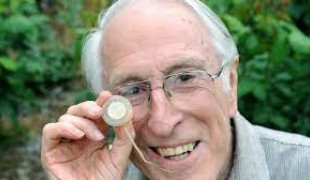- 14721
- 627
- 20
- 20
- 0
- Help Ukraine
About the solution
Shogo was assisted by a team of researchers from the university after Kenichi had most of his tongue surgically removed. As he was no unable to speak, he asked Shogo to help him by creating a new prosthesis that would allow him to speak.
The professor started working on the challenge by looking into existing tongue prosthesis and only found one paper about the subject, in Japan, in which the artificial tongue was part of a denture and could not be moved.
“Developing an oral prosthesis is a painstaking process for patients. This time, we could create a really good prosthesis quickly thanks to Kozaki, who is a dentist himself. He tried many different versions of the prosthesis and offered us detailed feedback”, the inventor explained.
Shogo Minagi’s team developed a solution having into account that whenever someone speaks, the tongue has to touch the palate, but the problem was that people with no tongue are not able to perform this action.
The new prosthesis is made of resin, moves up and down in the mouth as it is connected to the back teeth by a wire. The user controls the device by pushing it with the remaining base of their tongue.
The team leader also added that some users can wear a resin filling over their palate to make it easier for the device to make contact.
Now, the team hopes that the innovation becomes available worldwide - and that’s why they’ve used materials that are already widely used by these industry professionals.
“We have used materials that are already widely used, so any dental technician can make this type of prosthesis. We would like to share our know-how widely with clinics nationwide, to help as many people as possible”, he expressed.
At the time of the development, at least four people were about to get these artificial tongues.
Adapted from: https://bit.ly/2ELTZ5z
This solution shall not include mention to the use of drugs, chemicals or biologicals (including food); invasive devices; offensive, commercial or inherently dangerous content. This solution was not medically validated. Proceed with caution! If you have any doubts, please consult with a health professional.
DISCLAIMER: This story was written by someone who is not the author of the solution, therefore please be advised that, although it was written with the utmost respect for the innovation and the innovator, there can be some incorrect statements. If you find any errors please contact the patient Innovation team via info@patient-innovation.com
-
-
296
-
0
-
3568

Man creates new sign language gestures to help his blind and deaf friend to enjoy football games
-
-
-
290
-
0
-
3303

Professor Graeme Clark invented the Cochlear Implant
COMMUNICATION: Communicating, whether by speaking, listening, or other means
Listening to music
Congenital Deafness
5 Senses support devices: (glasses, hearing aids, headphones...)
Hearing loss or ringing in the ears (tinnitus)
Regaining sensory function
Promoting self-management
Improving Speech and Communication
General and Family Medicine
Neurology
Otorhinolaryngology
Australia
-
-
-
405
-
2
-
4738

Student invents glove that translates sign language into text
COMMUNICATION: Communicating, whether by speaking, listening, or other means
Social interaction
Blindness
Visual Impairment
Hearing Disorders
Congenital Deafness
Speech Disorder
App (Including when connected with wearable)
Body-Worn solutions (Clothing, accessories, shoes, sensors...)
5 Senses support devices: (glasses, hearing aids, headphones...)
Vision problems
Difficulty speaking or understanding speech
Hearing loss or ringing in the ears (tinnitus)
Regaining sensory function
Promoting inclusivity and social integration
Improving Speech and Communication
Neurology
Ophthalmology
Otorhinolaryngology
Turkey
-
 en
en